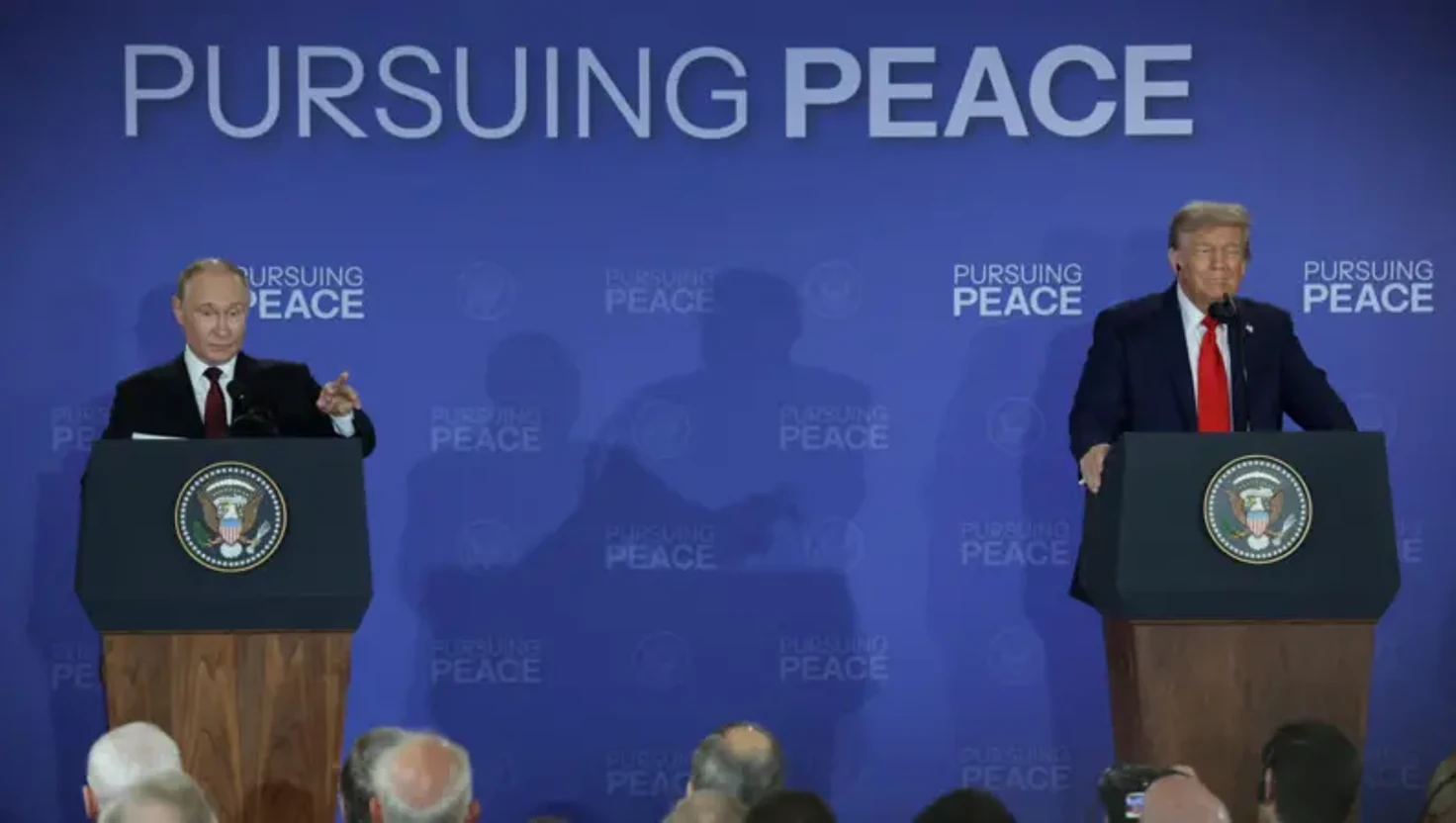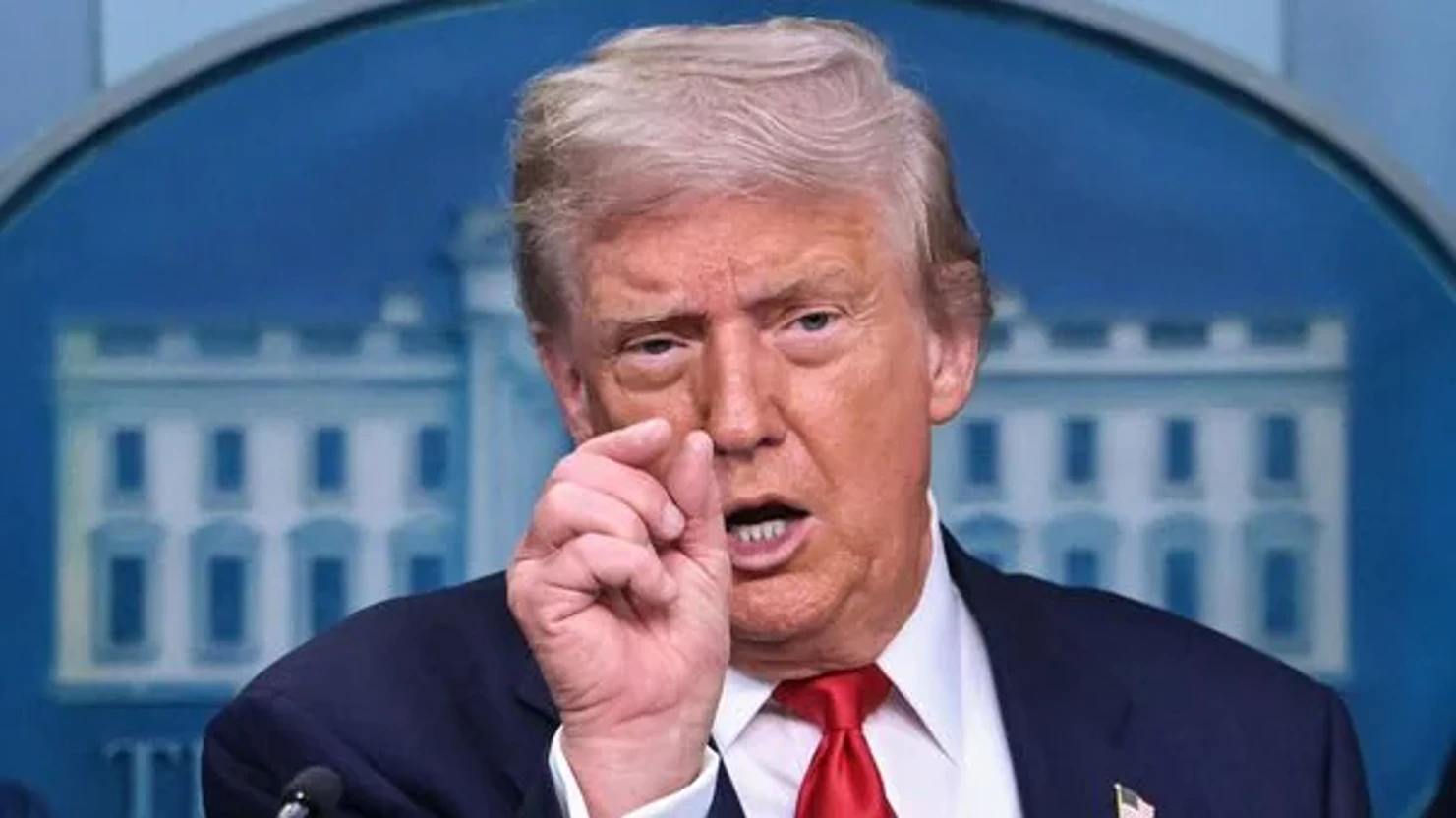No deal but 'progress made' on Ukraine, says Trump after talks with Putin

No deal but 'progress made' on Ukraine, says Trump talks with Putin
US President Donald Trump and Russian President Vladimir Putin complete discussions without a resolution on the Ukraine conflict, characterising talks as productive.
U.S. President Donald Trump and Russian President Vladimir Putin met in Anchorage, Alaska, on Friday, concluding discussions regarding the ongoing conflict in Ukraine without reaching a formal agreement. The talks, which lasted nearly three hours, were described by Trump as 'very productive,' despite no substantial breakthroughs being reported.
No Formal Agreement
Following their meeting, both leaders addressed the media but did not take questions. Trump emphasised that 'there's no deal until there's a deal' while acknowledging some progress during their dialogue. He stated, 'There were many, many points that we agreed on,' although he did not specify which points had been discussed.
Putin echoed a positive sentiment, warning Ukraine and its European allies against creating 'any obstacles' to ongoing diplomatic efforts. However, details regarding the potential pathways to a ceasefire or other resolutions remained unclear.
Context of the Meeting
This summit was the first direct encounter between the two leaders since 2019. High-level aides participated in the discussions, and both parties aimed to address the humanitarian crisis resulting from the conflict, which has now continued for over three years. The war, triggered by Russia's invasion of Ukraine in February 2022, has resulted in significant civilian casualties, with estimates indicating over 1.2 million people affected.
Ukrainian President Volodymyr Zelensky, who was not present at the meeting, had reportedly expressed hope for the U.S.'s involvement in facilitating peace talks. Prior to the summit, he reiterated Ukraine's reliance on American diplomatic support. In light of the ongoing conflict, Zelensky insisted that a ceasefire must be established as a prerequisite for any meaningful dialogue.
Future Prospects
Trump indicated that he planned to inform Zelensky, along with NATO leaders, about the outcomes of his meeting with Putin. Both leaders expressed intentions to convene further discussions, with Trump hinting at the possibility of a future three-way meeting including Zelensky.
Critics in Ukraine have voiced concerns that any decisions made could potentially disadvantage their country, particularly regarding territorial disputes. Zelensky underlined his government’s position against ceding any territory to Russia, a stance crucial for the preservation of national sovereignty.
Scepticism Surrounding Progress
While both Trump and Putin framed the discussions in a positive light, questions linger regarding the effectiveness of the talks. Observers are cautious about the true implications of the summit, considering the lack of visible outcomes. Trump’s call for a ceasefire was met with apprehension, as Zelensky has demanded concrete actions from Russia as foundational to any negotiations.
Zelensky remarked that it is essential for Russia to take steps towards peace and stated, 'We are counting on America.' In response to the summit, he reiterated that Ukraine seeks security guarantees to ensure its territorial integrity.
As the international community closely monitors the ramifications of this meeting, many remain hopeful that future discussions will lead to a definitive resolution to one of the most devastating conflicts in Europe in decades. The situation in Ukraine remains dynamic, with continued military actions reported in the region, underscoring the urgency for a swift diplomatic resolution.
Conclusion
The Anchorage summit between Trump and Putin represents a pivotal moment in U.S.-Russia relations, yet the absence of a concrete agreement leaves many uncertainties regarding the future of peace efforts. Both leaders possess significant diplomatic tools and influence, but whether this will translate into a genuine cessation of hostilities remains to be seen. Trump’s role as a facilitator in the conflict continues to elicit mixed reactions, both domestically and internationally.
No Formal Agreement
Following their meeting, both leaders addressed the media but did not take questions. Trump emphasised that 'there's no deal until there's a deal' while acknowledging some progress during their dialogue. He stated, 'There were many, many points that we agreed on,' although he did not specify which points had been discussed.
Putin echoed a positive sentiment, warning Ukraine and its European allies against creating 'any obstacles' to ongoing diplomatic efforts. However, details regarding the potential pathways to a ceasefire or other resolutions remained unclear.
Context of the Meeting
This summit was the first direct encounter between the two leaders since 2019. High-level aides participated in the discussions, and both parties aimed to address the humanitarian crisis resulting from the conflict, which has now continued for over three years. The war, triggered by Russia's invasion of Ukraine in February 2022, has resulted in significant civilian casualties, with estimates indicating over 1.2 million people affected.
Ukrainian President Volodymyr Zelensky, who was not present at the meeting, had reportedly expressed hope for the U.S.'s involvement in facilitating peace talks. Prior to the summit, he reiterated Ukraine's reliance on American diplomatic support. In light of the ongoing conflict, Zelensky insisted that a ceasefire must be established as a prerequisite for any meaningful dialogue.
Future Prospects
Trump indicated that he planned to inform Zelensky, along with NATO leaders, about the outcomes of his meeting with Putin. Both leaders expressed intentions to convene further discussions, with Trump hinting at the possibility of a future three-way meeting including Zelensky.
Critics in Ukraine have voiced concerns that any decisions made could potentially disadvantage their country, particularly regarding territorial disputes. Zelensky underlined his government’s position against ceding any territory to Russia, a stance crucial for the preservation of national sovereignty.
Scepticism Surrounding Progress
While both Trump and Putin framed the discussions in a positive light, questions linger regarding the effectiveness of the talks. Observers are cautious about the true implications of the summit, considering the lack of visible outcomes. Trump’s call for a ceasefire was met with apprehension, as Zelensky has demanded concrete actions from Russia as foundational to any negotiations.
Zelensky remarked that it is essential for Russia to take steps towards peace and stated, 'We are counting on America.' In response to the summit, he reiterated that Ukraine seeks security guarantees to ensure its territorial integrity.
As the international community closely monitors the ramifications of this meeting, many remain hopeful that future discussions will lead to a definitive resolution to one of the most devastating conflicts in Europe in decades. The situation in Ukraine remains dynamic, with continued military actions reported in the region, underscoring the urgency for a swift diplomatic resolution.
Conclusion
The Anchorage summit between Trump and Putin represents a pivotal moment in U.S.-Russia relations, yet the absence of a concrete agreement leaves many uncertainties regarding the future of peace efforts. Both leaders possess significant diplomatic tools and influence, but whether this will translate into a genuine cessation of hostilities remains to be seen. Trump’s role as a facilitator in the conflict continues to elicit mixed reactions, both domestically and internationally.

Trump Announces Federal Control Over Washington D.C. Police Force
President Donald Trump deploys the National Guard and assumes control of D.C. police as part of new crime and homelessness initiatives.
| 2025-08-12

Wrestling Icon Hulk Hogan Dies at 71, Leaving Lasting Legacy
Professional wrestler Hulk Hogan, known for his charisma and influence in the sport, passes away at 71, leaving a profound impact on wrestling culture.
| 2025-07-25

Tulsi Gabbard Publishes Documents Alleging Obama Administration Misconduct
Tulsi Gabbard has released documents claiming the Obama administration misused intelligence regarding the 2016 US presidential election.
| 2025-07-24

US President Donald Trump imposes 30% tariffs on imports from the European Union and Mexico from 1 August
US President Donald Trump announces 30% tariffs on EU and Mexico from 1 August, threatening higher taxes if retaliated. The EU and Mexico prepare countermeasures.
| 2025-07-13

Federal Judge Blocks Trump's Birthright Citizenship Order Nationwide
A US judge halts President Trump’s order ending birthright citizenship, granting nationwide protection for children born to non-citizens.
| 2025-07-11




